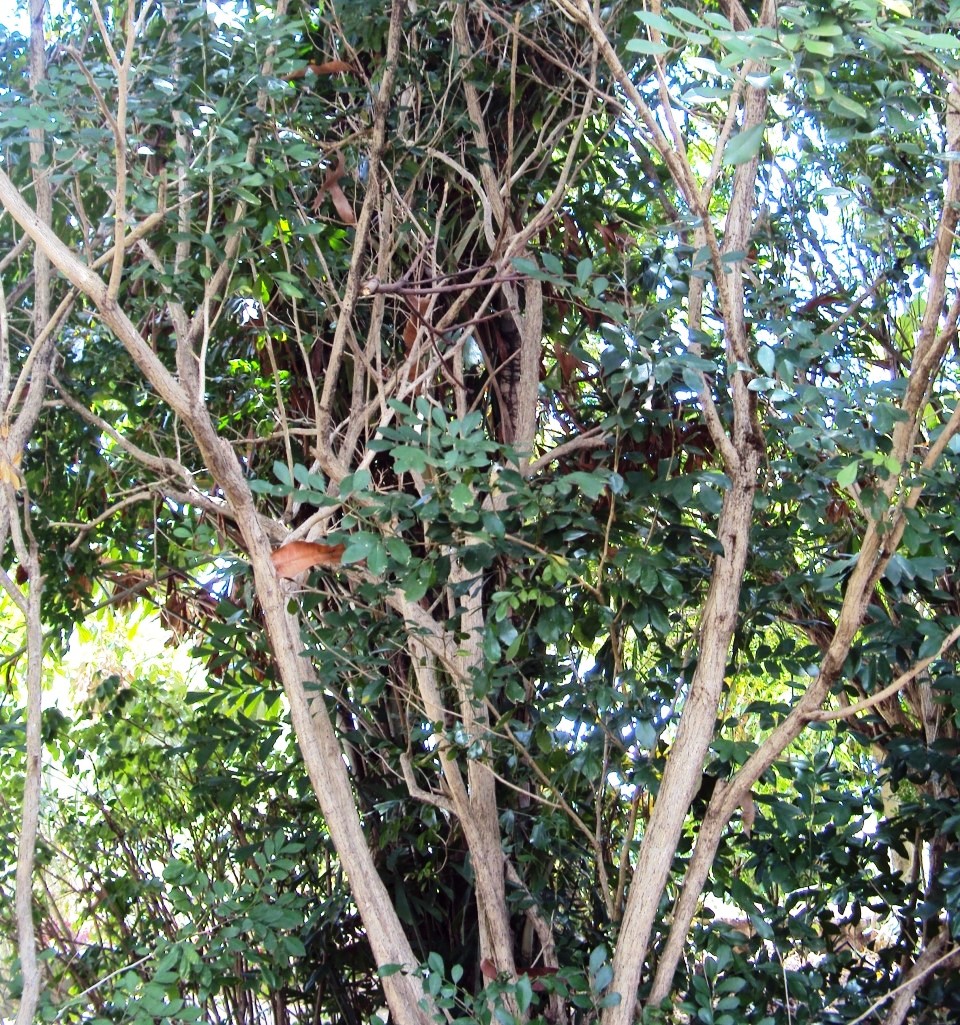Vitex doniana

|
|
Vitex doniana Common Names: Black Plum, African Olive, Dinya Scientific
Classification Kingdom: Plantae Clade: Tracheophytes Clade: Angiosperms Clade: Eudicots Clade: Asterids Order: Lamiales Family: Lamiaceae Genus: Vitex Species: V. doniana Binomial Name: Vitex doniana Sweet Synonyms: Vitex cienkowskii Kotschy & Peyr., Vitex umbrosa G. Don Morphological Description Vitex doniana,
commonly known as Black Plum, is a deciduous tree typically growing 4–8 m tall,
occasionally reaching 15 m in optimal conditions. It is characterized by: · Bark: Furrowed, grey-brown, peeling in strips · Leaves: Opposite, compound, palmate with 5–7 leaflets, each 5–15 cm
long, glossy dark green · Flowers: Small, white to pale purple, 5–6 mm long, in dense panicles,
blooming April–June · Fruit: Drupes, 2–3 cm long, dark purple to black when ripe, sweet and
fleshy The fruit’s sweet pulp
contrasts with its bitter leaves, a trait valued in culinary and medicinal uses
(Orwa et al., 2009). Distribution and Habitat Vitex doniana is
widespread across tropical Africa, from Senegal to Somalia, south to South
Africa, including Nigeria, Ethiopia, Uganda, Eswatini, Tanzania, and Zambia. It
thrives in: · Habitats: Riverbanks, open woodlands, forest edges, savannas · Climate: Tropical, with rainfall of 800–2,000 mm annually,
temperatures of 20–35°C · Soil Conditions: Well-drained loamy or sandy soils (pH
5.5–7.0) · Elevation: Sea level to 1,850 m It is also cultivated in
Mauritius and Seychelles for its fruit and wood (Bunu et al., 2021). Ethnopharmacology Vitex doniana,
commonly known as black plum or Dinya in parts of West Africa, is a highly
valued medicinal plant traditionally used for treating a variety of ailments.
Different parts of the plant, especially the leaves, bark, roots, and fruits, are
employed for their antimicrobial, antioxidant, anti-inflammatory, analgesic,
antidiabetic, hepatoprotective, and nutritional properties. It is used in folk
medicine to manage fevers, diabetes, liver diseases, digestive disorders,
wounds, and respiratory conditions. The plant is also noted for its role in
boosting general health and immunity, largely due to its rich content of
vitamins, minerals, and bioactive compounds such as flavonoids, alkaloids,
terpenoids, and phenolics. While many traditional uses have been supported by
preliminary scientific research, further clinical studies are needed to
validate its efficacy and safety for standardized therapeutic use. · Antimalarial: Leaf decoctions reduce Plasmodium
falciparum growth (IC₅₀ 25 µg/mL), used in Niger State, Nigeria (Bunu et
al., 2021). · Antimicrobial: Bark extracts inhibit S.
aureus (MIC 125 µg/mL), used in Ghana for infections (Abiodun et al.,
2015). · Anti-inflammatory: Ecdysteroids reduce paw edema in rats (60%
at 100 mg/kg), used in Kenya for fever (Ochieng et al., 2013). · Antioxidant: Leaf extracts scavenge DPPH radicals (IC₅₀ 10 µg/mL), used
in Nigeria for oxidative stress (Agbafor et al., 2011). · Liver Health: Stem bark lowers ALT in CCl₄-treated rats (40% at 250
mg/kg), used in Nigeria for liver disorders (James et al., 2014). · Gastrointestinal Treatment: Fruit extracts treat dysentery in Burkina
Faso. ⚠ Toxicity Profile: No acute toxicity at traditional doses (LD₅₀
> 5,000 mg/kg in rats), but high doses of ecdysteroids may cause
cytotoxicity (LC₅₀ 30 µg/mL in vitro). Overuse may lead to nausea or liver stress;
use under guidance is recommended (Bunu et al., 2021). Phytochemistry The plant’s medicinal
properties are driven by a diverse phytochemical profile: · Ecdysteroids: 20-Hydroxyecdysone, turkesterone, with anti-inflammatory and
antimalarial effects · Flavonoids: Quercetin, kaempferol, providing antioxidant benefits · Saponins: Antibacterial and gastrointestinal protective compounds · Tannins: Astringent, aiding wound healing and diarrhea relief · Triterpenoids: Oleanolic acid, supporting liver health (Ifeanacho et al.,
2019). Additional Uses · Nutritional: Fruits rich in vitamins C and A, minerals (iron, potassium),
eaten raw or as jam in Ghana (Orwa et al., 2009) · Ethnoveterinary: Leaves used in Senegal to treat livestock
infections · Economic: Wood for construction, tools, and charcoal in Uganda · Cultural: Bark infusions added to alcoholic drinks in Nigeria for
potency References
External Links More Pictures |
|
| Compounds of Vitex doniana | |
| References |